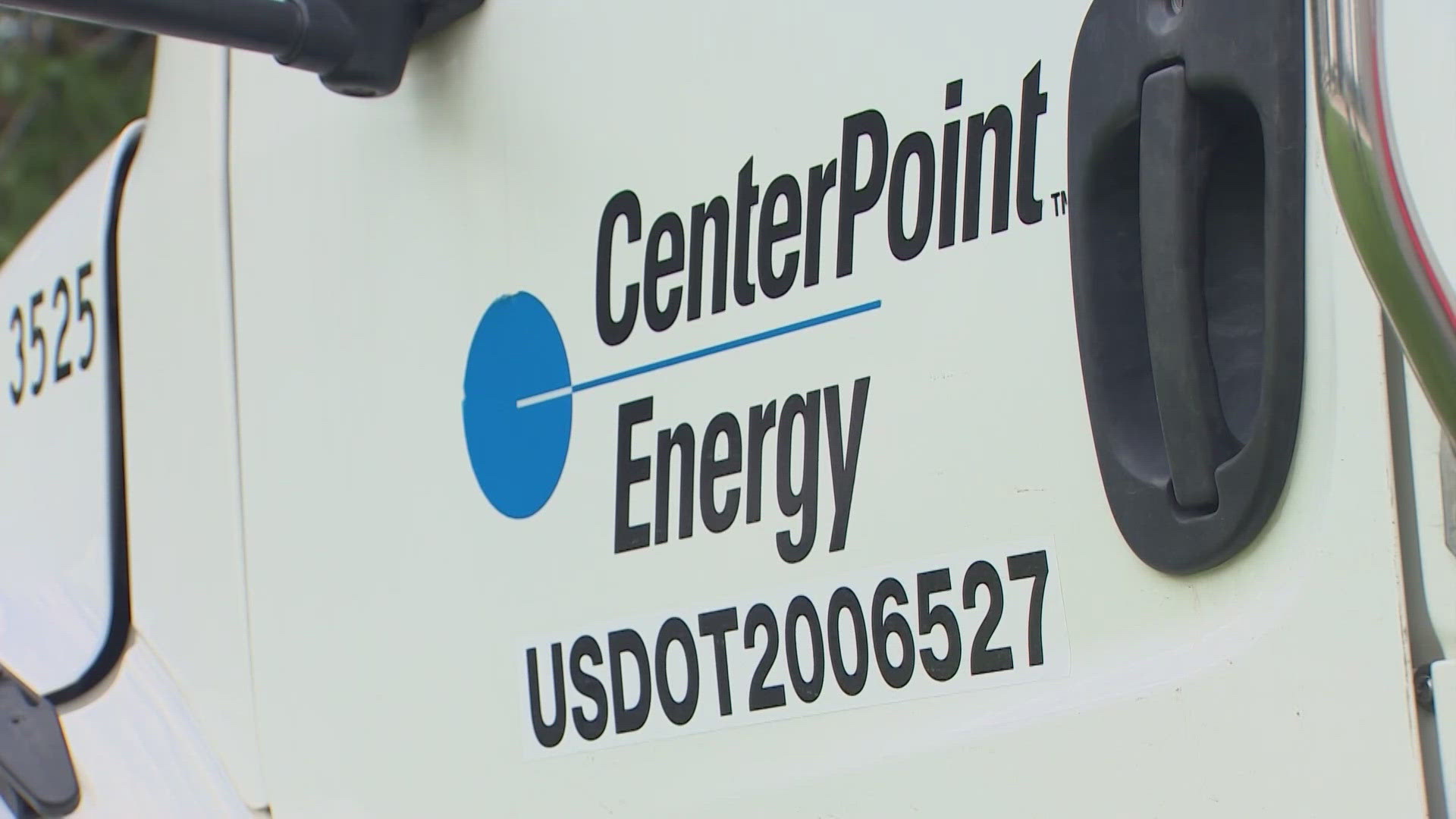HOUSTON — CenterPoint Energy announced the next phase of its Greater Houston Resiliency Initiative (GHRI) on Monday in response to massive and deadly outages after Hurricane Beryl.
Phase 2 of the GHRI will focus on efforts to strengthen and modernize the energy system, improve response, improve communications and develop stronger partnerships ahead of the 2025 hurricane season, CenterPoint said. The goal is to reduce the length and frequency of outages with 125 million fewer outage minutes annually for customers in the Greater Houston area.
Editor's note: The above video aired at an earlier date.
The ambitious second phase actions include:
- Installing new or replacing 25,000 poles to meet extreme wind standards
- Trimming or removing higher-risk vegetation across 4,000 miles of power lines
- Installing 4,500 automation devices, known as trip savers, and 350 Intelligent Grid Switching Devices to help build a self-healing grid that utilizes automation to respond to outages faster. Undergrounding more than 400 miles of power line
- Launching a year-round public emergency preparedness and safety communications campaign
- Strengthening our local partnerships with agencies and partners critical to our emergency response efforts
“We know how important reliable and resilient energy is to our 2.8 million customers and that the Greater Houston region is the economic engine for the State of Texas and the energy capital of the world," CenterPoint President and CEO Jason Wells said. "We are committed to developing the self-healing grid of the future that our customers expect and deserve."
Wells said the goal is to build the most resilient coastal grid in the country.
Since August 17, CenterPoint has held 19 community open houses for its customers and community advocates, as well as numerous listening sessions with local officials and community leaders to help ensure the Phase Two actions address stakeholder concerns.
CenterPoint completes Phase 1 of the Greater Houston Resiliency Initiative
During GHRI Phase One, CenterPoint said it accomplished 40 of its original 42 commitments on or before the September 20 deadline, including:
- Trimming or removing higher-risk vegetation from more than 2,000 power line miles
- Installed more than 1,100 stronger, more storm-resilient poles and installed more than 300 automated devices known as trip savers.
- Launched a new outage tracker
CenterPoint's long-term goals
The ultimate goal of CenterPoint's long-term resiliency plan is to harden key aspects of the infrastructure, enhance the security of the grid, and build a smarter grid to combat extreme weather, major storms, and hurricanes.
CenterPoint will also propose investing at least $5 billion from 2026 to 2028 – the largest investment in Greater Houston infrastructure in the company’s nearly 160-year history. The $5 billion is part of CenterPoint’s new capital investment plan that includes more than $21 billion in total capital investment in its Texas electric and gas systems from 2025 through 2030.

